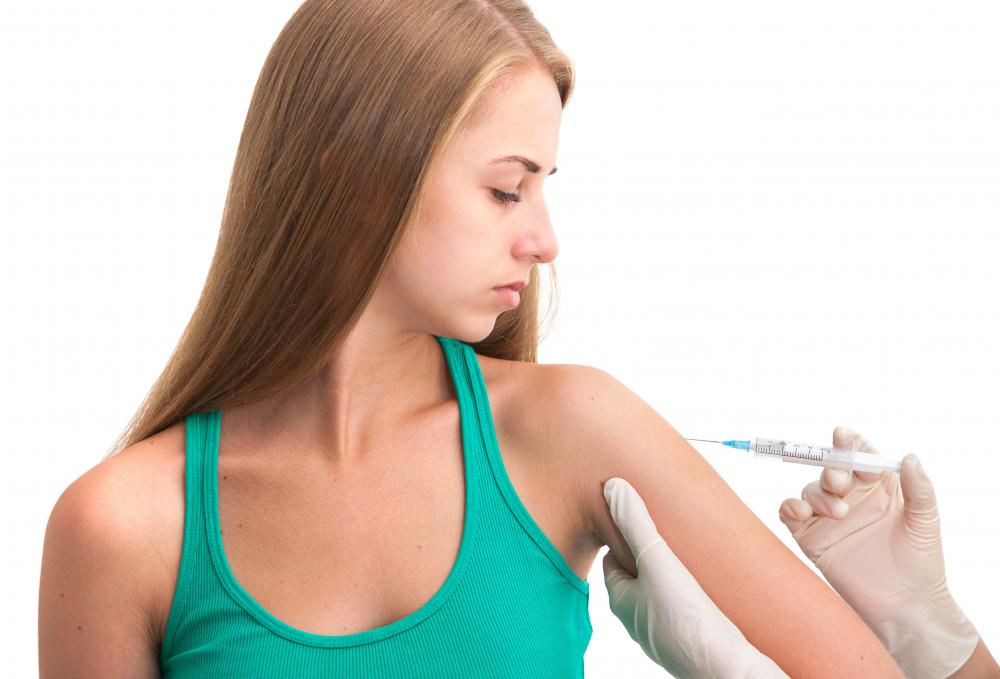At WiseGEEK, we're committed to delivering accurate, trustworthy information. Our expert-authored content is rigorously fact-checked and sourced from credible authorities. Discover how we uphold the highest standards in providing you with reliable knowledge.
What is the Salk Vaccine?
The Salk vaccine often makes the list of greatest medical triumphs of the 20th Century. Developed in the mid 1950s by Jonas Salk, this was the first immunization against the horrible and devastating poliovirus. A second vaccination that is sometimes called the Sabin vaccine was developed for polio about a decade later and is named after its creator, Albert Bruce Sabin. Both vaccines, with a few modifications, are in use today and may even be used in combination to be certain polio is not contracted.
There are some key differences between the Salk and Sabin vaccines. The Salk vaccine uses inactivated poliovirus, is injected via shot, and may be called the IPV. In contrast, the Sabin vaccine which is given orally, is often called the OPV and it contains a live attenuated version of the virus. OPV may not be recommended at all in some circumstances because in immunosuppressed populations it can result in contagion. Interestingly, when Sabin developed his vaccine, he did so to improve upon the Salk vaccination, but it turns out that once Dr. Salk exerted better quality control over virus source, the Salk vaccine was actually safer from a contagion perspective.

For many years the OPV was a more common choice in vaccination. Children or unvaccinated adults would take a few drops of live attenuated virus per the vaccination schedule. In the 1980s and afterwards, interest grew in using the safer IPV, and now the Salk vaccine is often the preferred treatment.
Some doctors recommend vaccinating with both live and dead virus for additional protection, though this recommendation is no longer accepted by the US Centers for Disease Control (CDC). It believes that the IPV alone is adequate, especially in parts of the world where wild polio has not occurred for many decades. Doctors may adjust recommendations on who should get the Sabin and Salk vaccine based on individual health circumstances. It should be noted that virus contraction from the OPV is very rare, and from the IPV, the fact that the virus is dead makes this impossible.

As with most vaccinations, the goal behind the Salk vaccine is to expose the body to a safe form of the virus that will cause antibodies to develop. Once these develop, the person’s body acts as though it has already had the disease. In most cases, provided correct doses are given, immunity is conferred for life.
It’s also true that most vaccines have a few side effects. With the Salk vaccine, the most common side effect is soreness at the injection site. Rarely, other effects like allergy to the vaccine occur. Generally, risk of getting the shot is extremely minimal, whereas risk of complications from polio, though contagion would be rare, could be life threatening and life altering.

One question people may have about the IPV is why people should receive it anymore. The answer is that wild polio still exists in many parts of the world, and until it can be eradicated on a worldwide basis, the risk of getting the disease or to have it return is always possible. The Salk vaccine makes it possible to prevent this scenario when strong vaccination programs are in place.
AS FEATURED ON:
AS FEATURED ON:














Discuss this Article
Post your comments